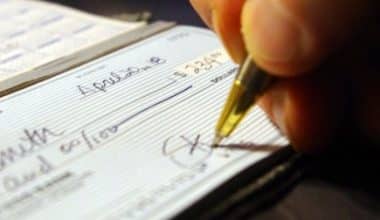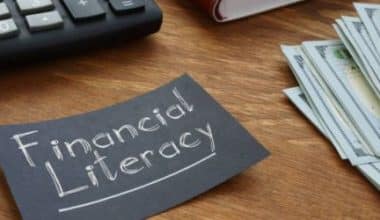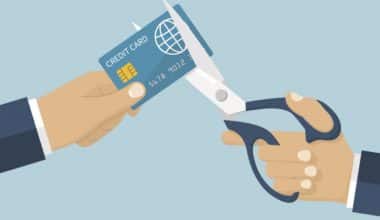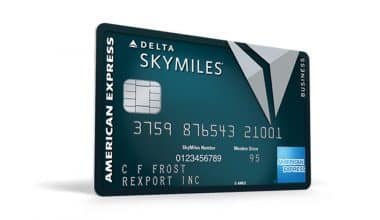“Owners draw” is a method for business owners, typically those of a sole proprietorship or partnership, to take money out of the business for personal use. This is different from a salary, which is a regular payment made to an employee for their work. Understanding how owners’ draw may work, the differences between owners’ draw vs salary, the application of owners’ draw in an LLC, the taxes that apply to owners’ draw, and whether owners’ draw is considered income are important topics to know when it comes to managing a business. Owners draw can help business owners access their own money and manage their personal expenses, but it’s important to keep accurate records and be aware of tax implications and regulations.
What Are Owners Draw?
Owners’ draw are a method for small business owners to take money out of their business for personal use. It is a way for the owner to take money out of the business without affecting the company’s financial statements. It is important to track owners’ profits and ensure that they do not exceed the amount of profit the business generates, as it may affect the business’s ability to pay its bills and continue operating.
How Do Owners Draw Work?
When taking a draw, most business owners simply make out a check to themselves from the company’s checking account. When the money is in their own bank account, they can use it however they like. If your business is a sole proprietorship, a partnership, or an LLC treated for tax purposes as a sole proprietorship or a partnership, then taking a draw is rather simple. Your business owner’s equity will decrease in proportion to your withdrawals and losses. A company’s owner’s equity can grow through new investments and retained earnings.
Owners draw work in a way that lets a small business owner take money out for personal use. The owner can write a check, make an electronic transfer, or withdraw cash from the corporate bank account. The owners draw work in a way that usually reduces the owner’s equity on the company’s balance sheet. Corporations, for example, have different ways of transferring money out of the firm, so it’s vital to contact a tax expert or accountant to make sure the business is following the rules.
What Are LLC Owners Draw
LLC owners’ draw allows LLC owners to withdraw money from the company for personal use. The members of an LLC are the owners, and they may have varying levels of ownership, management, and investment. When an LLC owner takes a draw, the member’s equity account usually goes down on the balance sheet. The member’s equity account shows how much money the member has invested in the business. This decrease in equity has no effect on the company’s assets or obligations.
LLC owners’ draw are similar to taking a salary, but they are not income for the business and are not subject to payroll taxes. But it’s important to talk to a tax expert or accountant to make sure the business is following the rules and procedures that apply to an LLC. Also, it’s important to keep track of the money the LLC owners draw and ensure that it doesn’t exceed the business’s profits, as it can affect the business’s ability to pay bills and continue operating.
Earning Money as an LLC Member
In most cases, LLC owners will not be employees and will not be eligible for salary or wage payments from the company. However, the owner of a single-member LLC is a sole proprietor, and the owners of a multi-member LLC are partners in a general partnership for tax reasons. Members of an LLC receive their compensation from the firm in the form of a distribution of the company’s profits.
Single-Member Limited Liability Company
An “owner draw” is a business check or direct transfer from the LLC’s bank account to the sole member’s personal account.
Limited Liability Company with Multiple Members
Each LLC member’s capital account records their financial transactions with the LLC. When an LLC member needs access to funds, he or she can request a draw from the capital account. Checks made out to the member’s name by the company are the most common method of making a draw. A tax and accounting professional should advise on how to pay LLC members.
LLC and Income Taxes
One perk of forming an LLC is that the business itself doesn’t have to pay taxes. Instead, LLC profits and losses are passed on to the members, who must include them in their individual tax filings. When forming an LLC, its members can select whether or not the earnings will be distributed equally to all owners, based on ownership percentage, or according to some other agreed-upon formula. The split of the profits is then subject to individual member taxation.
Consider a limited liability corporation (LLC) with two members, one of whom owns sixty percent (60%) and the other forty percent (40%). Members will divide profits according to their ownership stakes. The first member will be responsible for reporting 60% of the LLC’s earnings and losses on their individual tax return, while the second member will be responsible for reporting 40% of the LLC’s profits and losses on their individual tax return.
Note that distributions to LLC owners are not salaries. There are no withholdings for federal, state, or FICA taxes on those payments. Members of an LLC make quarterly anticipated tax payments to satisfy their individual tax liability for their portion of the business’s income. All earnings, whether distributed as salary or left in the business’s bank account, are subject to the same tax rate.
Are Owners Draw an Asset or Liability?
Owners’ draw is not an asset or liability; it is a reduction of the owner’s equity on the balance sheet. An owner’s equity represents the owner’s financial interest in the business. However, it’s important to keep track of the owner’s draw and ensure that it doesn’t exceed the business’s profits, as it can affect the business’s ability to pay bills and continue operating. It is also important to consult with a tax advisor or accountant to ensure that the business is following the appropriate regulations and procedures for the specific type of business structure.
What Kind of Account Are Owners Draw?
On the balance sheet, an owner’s draw is usually shown as a decrease in the owner’s equity account. The owner’s equity account also shows how much money the owner has invested in the business. To calculate this, subtract the liabilities from the assets. Equity is reduced by the amount of an owner’s withdrawal from the company. This reduction in equity does not affect the assets or liabilities of the business. It’s also worth noting that certain businesses may record the owners’ draw in a different form, for example, as a reduction in a specific account such as a “drawing account” or “capital account,” depending on the company’s accounting approach.
What Are Owners Draw on a Balance Sheet?
On a balance sheet, owners draw is recorded as a reduction in the owner’s equity account. The owner’s equity account represents the owner’s financial interest in the business and is calculated by subtracting the business’s liabilities from its assets. When an owner takes money out of the business through owners draw, the equity account is decreased by the amount of the draw. This reduction in equity does not affect the assets or liabilities of the business.
It’s important to keep track of the owners’ draw and ensure that it doesn’t exceed the business’s profits as it can affect the business’s ability to pay bills and continue operating. It is also important to consult with a tax advisor or accountant to ensure that the business is following the appropriate regulations and procedures for the specific type of business structure.
Are Owners Draw Profit or Loss?
Owners’ draw is not typically reflected on the profit and loss (P&L) statement. The P&L statement shows the business’s revenue, expenses, and net profit or loss over a certain period of time. It’s vital to remember that the company’s net profit or loss on the P&L statement could be affected if the draw amount is greater than the company’s profits, which could have an impact on the company’s capacity to pay bills and stay in business. Therefore, it is important for the owner to consider the financial health of the business before making a decision and also to consult with an accountant or a tax advisor to ensure that the business is following the appropriate regulations and procedures.
How Do You Take Owners Draw?
Small business proprietors use owners’ checks to withdraw money for personal use. A few approaches to owner draw:
#1. Record the Draw
Before taking the draw, the business’s balance sheet should reflect the owner’s equity drop.
#2. Determine the Amount of the Draw
The owner should consider the financial health of the business and the number of profits before determining the amount of the draw.
#3. Write a Check or Make an Electronic Transfer
The owner can write a check or transfer money from the business’s bank account to their own.
#4. Keep Track of the Draws
To avoid exceeding the business’s profit, the owner should track the overall number of draws.
#5. Consult With a Tax Advisor or Accountant
It is important to consult with a tax advisor or accountant to ensure that the business is following the appropriate regulations and procedures for the specific type of business structure. It’s important to remember that some businesses have specific rules about how to take owners’ draws, so it’s best to talk to an accountant or bookkeeper to make sure the process is done right and in line with the rules.
Are Owners’ Drawings Dividends?
No, the owner’s draw does not qualify as dividends. However, dividends are payments provided to shareholders by a firm from its profits or reserves. Dividends are typically paid out in proportion to the number of shares owned by each shareholder.
On the other hand, an owner’s draw is a way for the owner to take money out of the business for personal use and it is not considered income for the business, it is also not subject to payroll taxes. Owners’ draws are recorded on the business’s balance sheet as a reduction in the owner’s equity account. It is a way for the owner to take money out of the business that doesn’t affect the company’s financial statements, but it is important to consider the financial health of the business before making a draw and consult with a tax advisor or accountant to ensure that the business is following the appropriate regulations and procedures.
Owners Draw Taxes
The taxes on owners’ draw will depend on the owner’s personal tax bracket. An owner’s dividend is not the same as a dividend paid to shareholders.
Owners Draw vs Salary
Owners’ draw vs. salary refers to two different ways that a business owner can take money out of their company. An owner’s draw is a withdrawal of money from the business by the owner for personal use. It does not represent a salary or wages earned for services rendered. It is considered a distribution of profits and is not subject to payroll taxes. Salary, on the other hand, is a regular payment made by an employer to an employee for services rendered. It is considered earned income and is subject to payroll taxes and other deductions.
FAQs
How do I record owner's withdrawals?
If an owner withdraws $1,000 for personal use, you must debit $1,000 from the drawings account for the owner, such as “John Smith, Drawings” or “John Smith, Drawing Cash.”
How does owner's draw affect the balance sheet?
Owner withdrawals will reduce assets and equity, affecting the company’s balance sheet.
Is owner's draw an expense account?
Owner’s drawings aren’t business expenses. It’s not on the income statement and doesn’t affect net income.
Related Articles
- CREDIT LINE LOAN: What It Is And When To Use It
- COMMISSION PAY: Methods, How It works; Is It Right For me?
- SALES COMMISSION STRUCTURE: 2022 Templates & Examples
- TITLE INSURANCE COST: How Much Does It Cost And Do You Need It?
- HOW TO START A REAL ESTATE BUSINESS IN 2023: Detailed Guide






